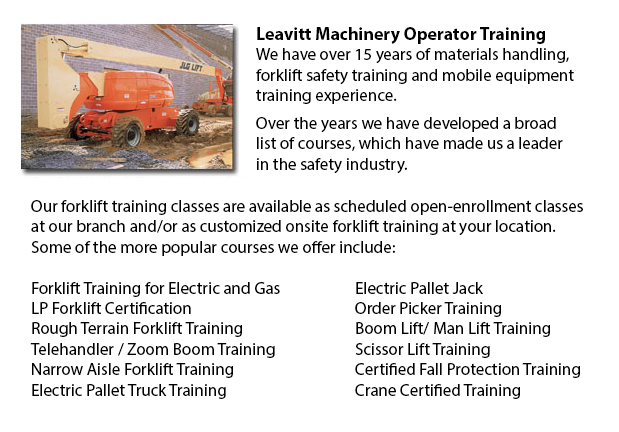
Boom Lift Safey Training Markham - Boom lifts fall under the kind of aerial lifting device or elevated work platform. Most normally utilized in industry, warehousing and construction; the boom lift is really versatile that it can be utilized in virtually any environment.
Elevated work platforms allow personnel to access work places which would be not reachable otherwise. There is inherent risk in the operation of these devices. Workers who operate them have to be trained in the proper operating procedures. Accident avoidance is vital.
The safety aspects which are involved in boom lift operation are included in our Boom Lift Training Programs. The course is best for individuals who operate self-propelled boom supported elevated work platforms and self-propelled elevated work platforms. Upon successful completion of the course, participants will be given a certificate by somebody licensed to confirm completing a hands-on evaluation.
Industry agencies, federal and local regulators, and lift manufacturers all play a part in providing information and establishing standards in order to help train operators in the safe utilization of elevated work platforms. The most important ways to avoid accidents associated to the use of elevated work platforms are as follows: putting on safety gear, conducting site assessment and inspecting machines.
Key safety factors when operating Boom lifts:
Operators stay away from power line, observing the minimum safe approach distance (or also known as MSAD). Voltage could arc across the air to be able to find an easy path to ground.
A telescopic boom must be retracted before lowering a work platform so as to maintain stability when the platform nears the ground.
Personnel working from the platform of a Boom lift must tie off so as to ensure their safety. Safety harness and lanyard combinations must not be connected to any anchorage other than that provided by the manufacturer, never to other poles or wires. Tying off may or may not be required in scissor lifts, which depends on particular local regulations, employer guidelines or job risks.
Avoid working on a slope which goes beyond the maximum slope rating as specified by the manufacturer. If the slop goes beyond requirements, therefore the equipment must be winched or transported over the slope. A grade can be simply measured by laying a straight board or edge of at least 3 feet on the slope. Then a carpenter's level could be laid on the straight edge and the end raised until it is level. The per-cent slope is obtained by measuring the distance to the ground (the rise) and dividing the rise by the length of the straight edge. Next multiply by 100.
-
Crane / Overhead Crane / Self-Erect Crane / Truck Mounted Crane / Hydraulic Cranes Training in Markham
Bridge cranes or overhead cranes are a kind of industrial material handling crane making use of a hook and line apparatus that runs on a horizontal beam running along two widely separated rails. Many overhead cranes could be seen inside a long factor... More -
Manlift Ticket Markham
Manlift Ticket Markham - The Manlifts and Elevated Platforms program provides training on the regulations, rules and correct application of safe operating procedures and work practices involved in everyday activities for individuals who work with thi... More -
Aerial Lift Train the Trainer Markham
Aerial Lift Train the Trainer Markham - The Aerial Lifts Train the Trainer Certification Program will teach trainers how to effectively train operators in safe industrial mobile equipment operation. Trainers are given in-depth instruction on aerial l... More -
Loader Operator Training Markham
Loader Operator Training Markham - Loader Operator Training - Within North America, lift truck operator training is required to be able to prevent workplace injuries and accidents. Certain forklift training would be provided to be able to offer forkl... More -
Aerial Boom Lift Ticket Markham
Aerial Boom Lift Ticket Markham - Aerial lift trucks can be used to accomplish many unique duties done in hard to reach aerial spaces. A few of the duties associated with this style of jack include performing daily repair on buildings with high ceili... More -
Boom Lift Operator Training Markham
Boom Lift Operator Training Markham - The cherry picker work platform is a type of work platform, that will usually have a bucket or platform at the hydraulic lifting system's end. The machine is likewise called a boom lift, man lift, hydraladder or... More -
Boom Lift License Markham
Boom Lift License Markham - Just fully qualified individuals must operate an aerial boom lift. Qualification can be obtained through a combination of classroom sessions and practical training with the particular kind of aerial lift that will be used... More -
Telehandler Training Courses Markham
Telehandler Training Courses Markham - The employer has the responsibility to make certain that their workers are trained to work proficiently with telehandler machines. The staff have to be assessed for their skill to utilize the equipment. If defic... More

Forklift Training Markham
TOLL FREE: 1-888-254-6157
Markham, Ontario
forklifttrainingmarkham.com
Email Us
About Us


